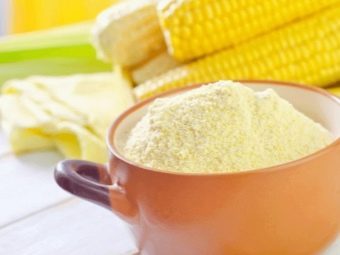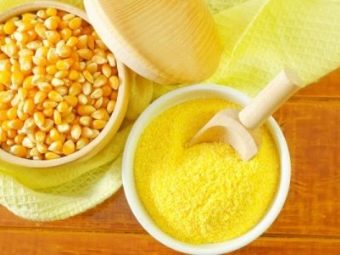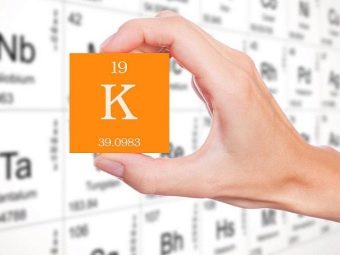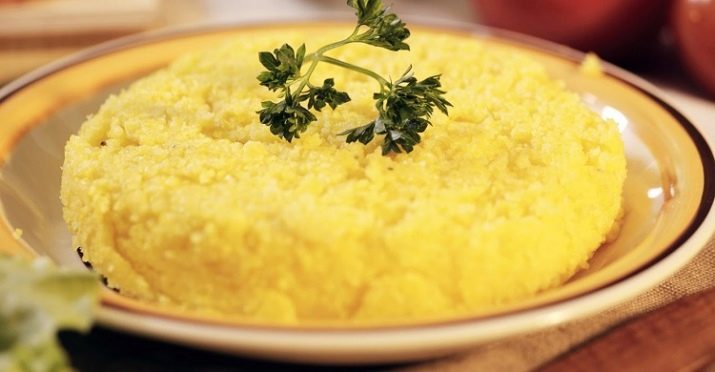Cornmeal: composition, properties and recipes
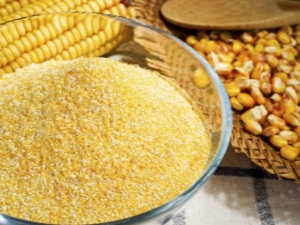
For several decades, corn has been called the queen of the fields - it is widely cultivated not only in Russia and the near abroad, but throughout the world.Corn makes a variety of products - sweet flakes, crispy sticks, flour and preservatives. One of the most popular products that can be found on the shelves of any store at a very low price is corn grits.
What it is?
The very first corn began to develop the indigenous people of America - it was from them that the culture came to the countries of the Old World at the very end of the XVI century.
For a long time, dishes from corn were considered food for poor peasants and monks. In those days, porridge was prepared in a capacious copper pot with constant stirring - it was brought to such a thickening, at which it did not drain from the agitator. A little later, additional components began to be added to it - seafood, vegetables, and mushrooms, and gradually the corn grout migrated from the houses of the poor to distinguished grandees and wealthy citizens.
Nowadays, cereals are used to make national dishes in restaurants and taverns, and in addition, it is often present in the home menu.
Meals from corn grits are hard or soft. It is suitable for both the first and second courses, it is cooked as a side dish or as a separate dish. Corn grits are made from peeled corn cobs of this vegetable culture. At the processing stage, only the endosperm remains from them, which is separated from the bran fragments and the sticky germ. In production, only those varieties of corn are used, the grains of which contain suitable concentrations of the vitreous and mealy lobes. In most cases, various sorts of siliceous, bursting and semi-sedentary cultures are used; yellow siliceous is used less often.
Grade grade should not exceed 1%, and the final product must meet the requirements set out in GOST 13634-90.
Nowadays, three kinds of cereals are produced: small, large, and also ground, and the latter is most often found on the shelves of grocery stores as a product of mass consumption. Small is used to make sweet corn sticks, and large - flakes, in terms of composition and nutritional value, they are identical. All difference is only in size. Grinded croup includes finely crushed kernels of grains that do not have any particular shape. Its only difference from a large one is that its facets are polished.
Corn grits are characterized by a useful ratio of BJU. If you compare corn grits with other varieties and cereals that are popular in our country, then it can be noted that the product is characterized by a high content of starch (70.4%) - it is second only to rice (70.7%) by this indicator. But the protein content here is minimal and amounts to 8.3% (for comparison, rice contains 7%, and barley - 9.3%). The share of fat components is not more than 1.2%, as in wheat, barley and wheat cereals. In addition, 100 g of the product contains 4.8 g of dietary fiber, 14 g of water and 0.7 g of ash components.
The food product enjoys the greatest popularity in Moldova - there it is included in the composition of most national dishes. The indigenous people of this country claim that the highest quality cereal is rich yellow, almost orange. However, this is not the only indicator that should be taken into account when buying - consumers are also guided by the dimensions of the grains and the degree of their homogeneity.
Keep in mind that a high quality product should not contain any husk, as well as any impurities and associated odor.
Corn grits should be stored in glass, as well as ceramic or metal dishes, plastic should be used as a last resort. Containers should be placed in shaded areas tightly closed. Corn grits after opening the package can be stored no longer than one month.
What is useful?
Corn grits are high-calorie foods.100 g of the product contains 328 calories, and in the milk-free porridge made from it is much less - only 86 kcal. This makes it possible to receive meals from cereals for all people in the process of losing weight, who are forced to go on diets and monitor their body weight. Krupa is very popular with supporters of proper nutrition - it contains a lot of vitamins, micro and macro elements. At the same time, it perfectly satisfies hunger and gives a feeling of satiety for a very long time.
Groats are full of vitamins A, PP, E and H, and in addition, it contains all the vitamins of group B. The content of amino acids, which are not synthesized by humans in the human body — lysine and tryptophan — is also very large, and croup is also rich in magnesium, phosphorus, calcium, iron, and potassium.
Corn is considered a hypoallergenic product, in connection with which doctors allow children to use meals from cereals. It is no coincidence that cereals from this cereal are recommended for children as one of the earliest complementary foods.
Dishes from corn grits need to be consumed by patients with pathologies of the digestive system, as they contain fiber, which provides cleansing of the large and small intestines from waste slag and fecal stone, and with them toxins, radionuclides and pesticides.
Regular intake effectively eliminates all putrefactive fermentation processes in the intestines and relieves chronic constipation.
Potassium and calcium, as well as vitamin E, accumulated in corn, has the most positive effect on the skin, stimulates the growth and strengthening of nails and hair. Carotenoids included in the product structure facilitate the course of the disease in case of bronchopulmonary diseases, as well as reduce the level of cholesterol in the blood and serve as prevention of thrombosis.
Phosphorus has a great benefit for the nervous system, and B vitamins together with magnesium reduce the severity of nervous disorders, relieve stress, and also soothe and normalize sleep.
Very useful dishes from corn grits diabetics. Firstly, the product has a low glycemic index, and secondly, croup includes a rather large amount of chromium, namely this element is an active participant in the regulation of the sugar absorption process, due to which the patient has minimal need for insulin.
Important: Unlike most other products, corn retains its beneficial properties during heat treatment, so cereals, soups and all kinds of casseroles made from this cereal are just as nutritious as the raw product.
Corn porridge is one of the first, which is recommended to enter in the children's menu - its include in prikorm after 6 months. The special value of dishes for the smallest is due to the stimulation of the gastrointestinal tract.
The use of porridge, rich in various minerals, lays the foundation for strong immunity, full-fledged metabolism and proper development of all systems and internal organs.
It is proved that even 100 g of cereals for 50% cover the daily human need for cobalt. Few people know, but this element is one of the most necessary, it stimulates the production of red blood cells, contributes to the maximum absorption of iron, and also improves the passage of nerve impulses, thereby normalizing the degree of excitability of nerve fibers.
Harm
Even very healthy products, as a rule, have certain contraindications for use, and therefore not all can be prescribed. And corn grits is no exception.
Harm of the product is minimal, but it is not recommended for people with ulcers in the acute stage. - this is due to the fact that fiber in its structure often causes irritation of the gastrointestinal tract. Also, the use of cereals should be limited to gastritis, pancreatitis and other chronic diseases of the digestive system.
Krupa is low in calories, so it is contraindicated for those suffering from dystrophy, as well as for those who wish to gain weight, because in this situation a base is needed, which allows you to gain body weight.
In all other cases, porridge and other meals from cereals can and even should be safely included in your weekly diet.
Nursing mothers should use the product with caution. In accordance with the “traffic light principle”, croup can cause allergic reactions in an infant, although if there is no redness or rash after eating the product by the mother in a baby breastfeeding, you can safely prepare this product.
What can you cook?
The most common dish that can be simply and easily cooked from corn grits is ordinary porridge. Its recipe is very simple: for one glass of cereal you need to take 4 glasses of water, and if you want to get a more liquid consistency, then the amount of water should be increased to 5 glasses. Such proportions are explained by the fact that the croup absorbs water well and swells quite strongly during cooking.
Another caveat - corn grits often burns, and therefore it is desirable to use non-stick pans when working with it.
To begin with, a part of the specified amount of water is put on the fire, brought to a full boil, poured a pinch of salt, with continuous stirring they inject the grits and continue to cook further. As soon as the consistency becomes quite thick and homogeneous, it is necessary to pour the remaining water and continue to simmer the porridge until fully cooked over low heat. It usually takes about 20-30 minutes.
Milk porridge can also be cooked from cereals. For them you will need:
- a glass of cereal;
- water - 400 ml;
- milk - 200 ml;
- butter;
- refined sugar;
- honey (optional).
The grits washed under running water are poured into the cooking vessel and filled with cool water. After the contents of the pan boil, the burner power should be reduced to a minimum and continue cooking until the water is completely absorbed into the grains. Immediately after this, milk should be mixed in, add sugar and honey and boil a few more minutes until cooked.
Most housewives have a slow cooker in their kitchen arsenal, which produces very tasty and fragrant dishes. To make porridge from corn grits in it, you should use the same proportions of ingredients as in the usual recipe. Cooking is carried out in the option "Krupa" or "Porridge", while the timer is set to 40 minutes.
Keep in mind that the grinder must be washed before cooking.
The list of dishes that can be made from corn grits is not limited to familiar cereals. For example, many taste unusual dish with an interesting name - hominy. This is the national food in Romania and Moldova, but, in fact, it is the same porridge, but of a more solid consistency. Hominy is usually cut into pieces and consumed as pies or bread.
You will need:
- milk - 200 ml;
- water - 400 ml;
- croup - 2 tbsp .;
- butter;
- refined sugar;
- salt.
Milk should be poured into a thick saucepan, put on the fire and bring to a boil, stirring, then dilute with water and lightly salted. Since milk contains protein, the contents of the pan begins to foam rapidly at the moment of boiling. As soon as this happens, you should pour grain and reduce the power of the flame.
Groats should be poured into one pile in the very center of the pan, as it is impregnated, it will be distributed by capacity itself.
As soon as all the liquid is absorbed, the pan should be removed from the burner and crush the contents so that the structure of the porridge becomes as homogeneous as possible, and it will thicken in the course of the ejection. As soon as the consistency becomes as cool as possible, you should add vegetable oil and another two or three minutes to the ceiling. Then the pan is tightly covered with a lid and kept on low heat for another quarter of an hour.
Hominy is used along with bacon and spicy cheese.To do this, it is thinly cut, rolled, dipped in butter with cracklings and eat a bit of sugar with cheese.
Another dish with an interesting name is polenta. This is the same hominy, only Italian. However, it enjoys popularity far beyond its borders - in the Balkans, in England and Switzerland.
To cook it, first you should chop a couple of cloves of garlic and 1 hot pepper, skip 100 g of soft cheese and 30-40 g of parmesan cheese through a grater. After that, the spices are fried in vegetable oil for 3 minutes and put on a paper towel to get rid of excess oil.
After that, it is necessary to boil 800 ml of water and salt it, then pour about 150-200 g of cereal and boil on low heat for 5 minutes.
The dish must be removed from the stove and mixed with frying and cheese, after which the whole mixture is spread on a baking sheet and baked for 25-40 at 180 degrees. Before use, it is cut into 2-2.5 cm cubes and eaten.
Corn tortillas - mchadi, which are often used for breakfast, have a very pleasant taste.
To prepare you need to take:
- 2 cups cereals;
- half a glass of water;
- 1/3 cup vegetable oil.
All ingredients are mixed, add water and form a dough. Water should be introduced in small portions, otherwise the dough is liquid.
Then they form cakes about 1 cm thick (in shape they should resemble small burgers) and fry in a hot frying pan on both sides.
Mchadi served with cheese.
Another way to cook dishes from corn grits is cutlets, they turn out tasty, nourishing and very cheap.
This dish is combined with fresh or stewed vegetables. To prepare this dish, you should take 200 g of cereals, 40 g of flour, vegetable oil, as well as salt, barberry and other spices to taste.
Corn grits are pre-mixed with water in the ratio of 1 to 2, put on low heat, brought to the boiling stage and boiled for 10-15 minutes, then salt is added to the contents of the saucepan with barberry, stirred, cooled and cutlets are formed. Roll them in flour or bread crumbs and fry in vegetable oil.
Quite tasty and savory is the first dish - corn soup with natural cream. This is an extremely satisfying dish that both adults and toddlers eat with great pleasure.
One serving will require 0.5 cups of cereal, 100 ml of country cream, 1 egg yolk, a little salt, black pepper, green onions and broth, which are boiled from beef or chicken beforehand. Fans of vegetarian cuisine can prepare a vegetable broth.
While it is boiling, mix the yolk and cream in a small dish - this will be the fill.
Meanwhile, using a whisk, pour the grits into the broth container (you need to soak it for an hour and a half), boil for 7-8 minutes, and then pour it into the pot and then cook a little more on the fire.
Just before being ready, salt it, and when serving, pepper and garnish with chopped green onions. This dish looks very appetizing.
And finally - the recipe of Banos, for which you need 2 cups of cereals, 1 liter of sour cream, and in addition, smoked lard, cheese, mushrooms, sugar and salt to taste.
Mushrooms should be boiled beforehand, in parallel boil sour cream with sugar and salt and pour into it a thin stream of corn grits.
Boil the porridge with continuous stirring until its consistency is thick. Immediately after that, it must be removed from the stove and rubbed intensively with a wooden spoon. Manipulations should be carried out until the mass is easily behind the walls of the vessel.
Cut the bacon into pieces and melt in a thick frying pan, remove the bacon and add any mushrooms to the melted fat, fry, grate the cheese and stir.
All components are layered: banosh, then bacon, and then roasting and cheese.
From the video below you will learn how useful corn grits are.



